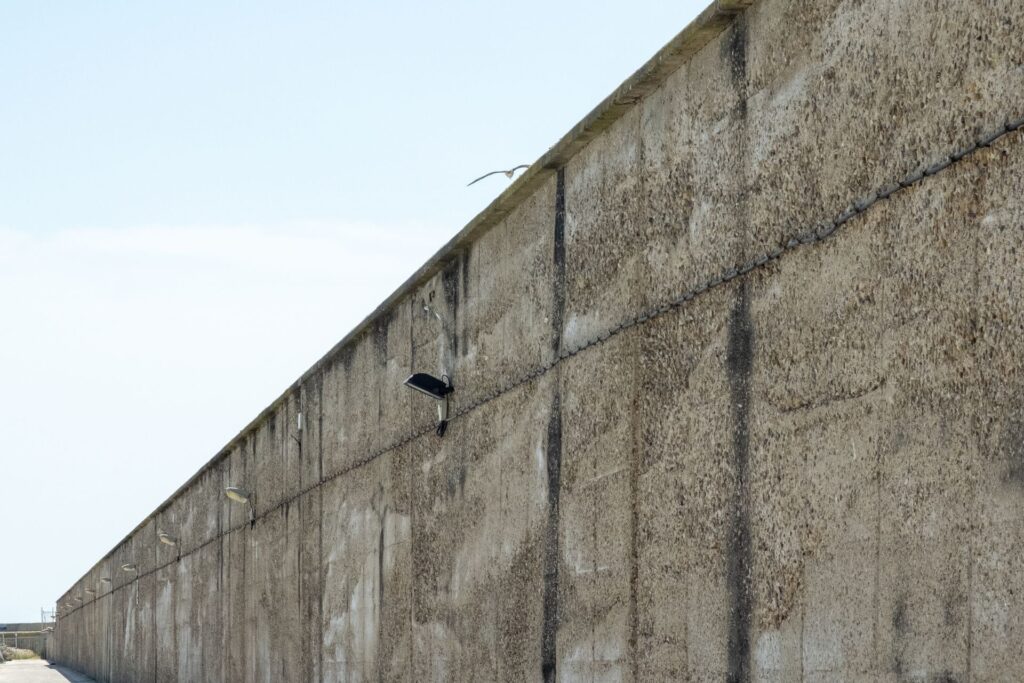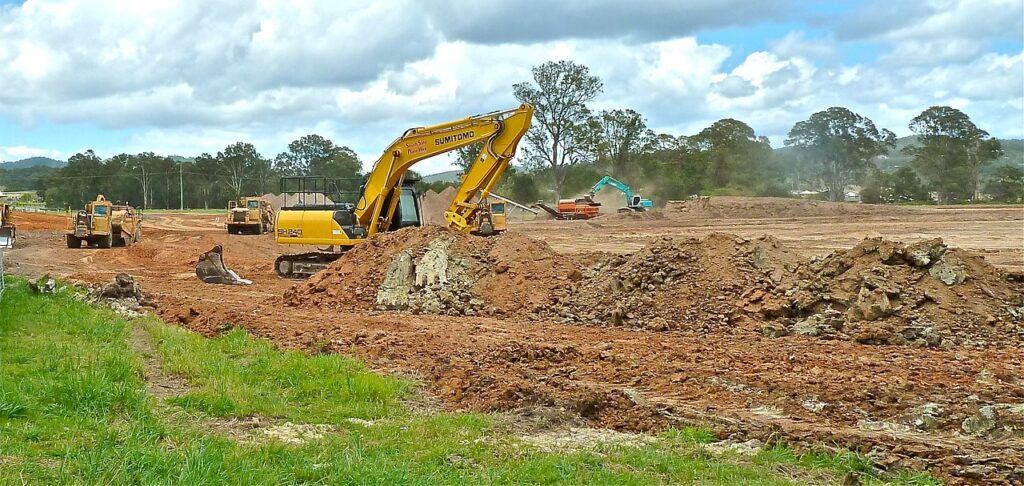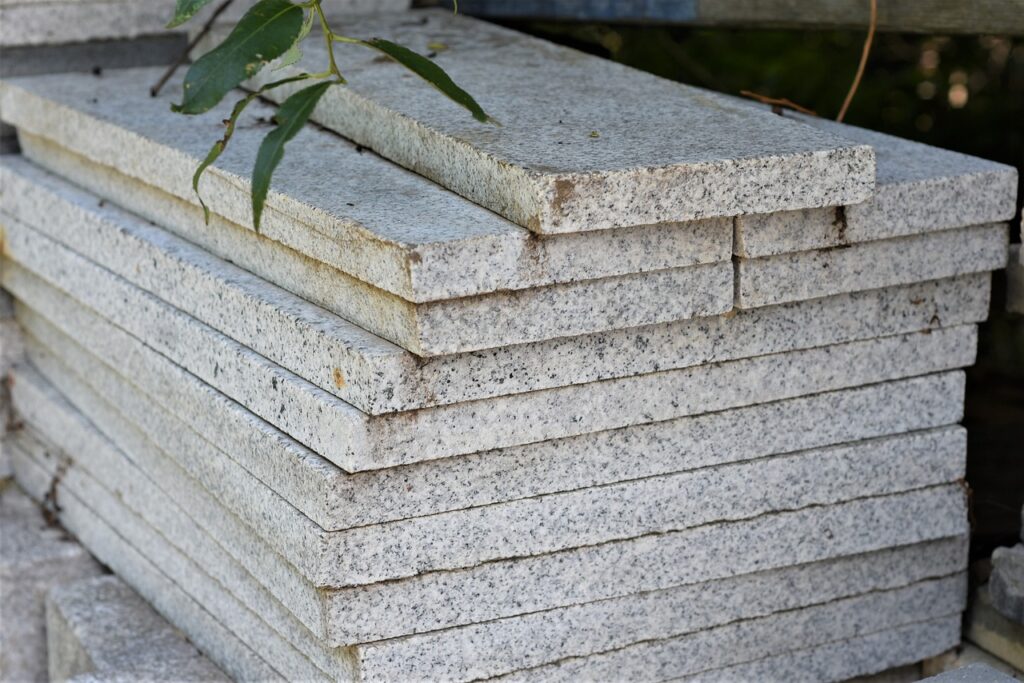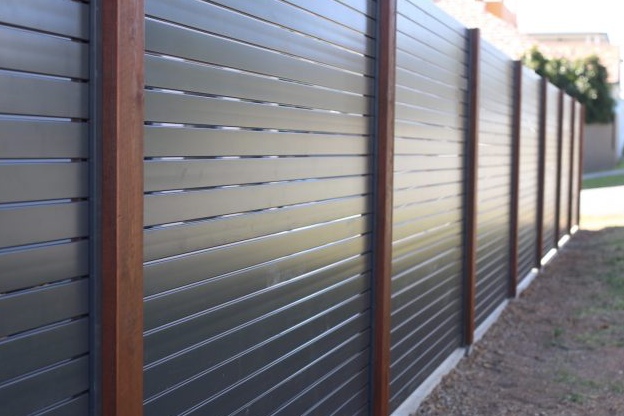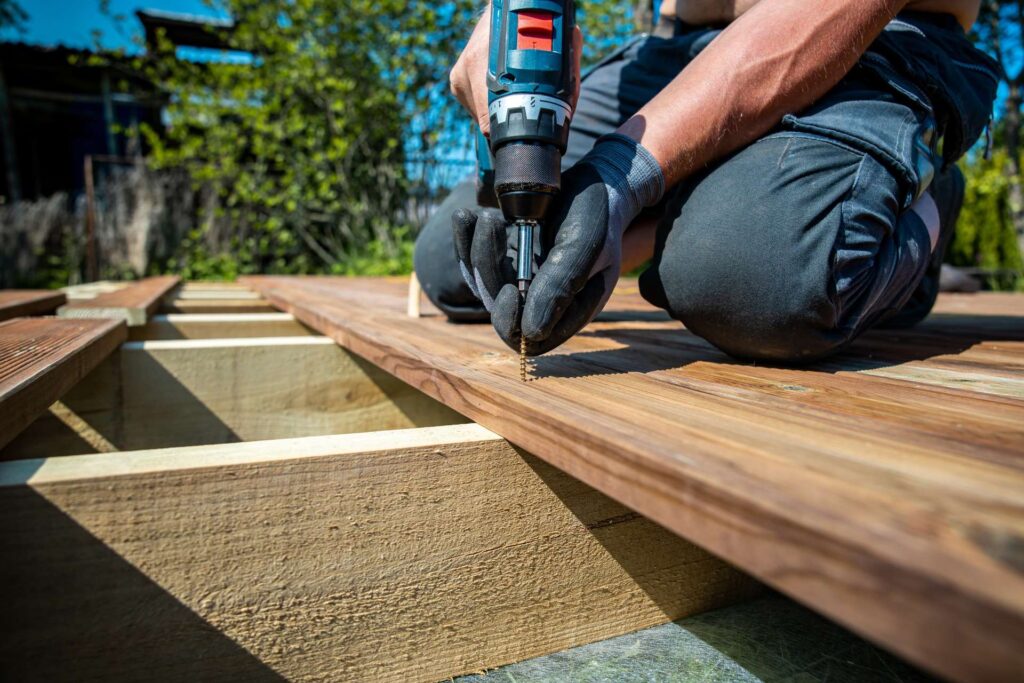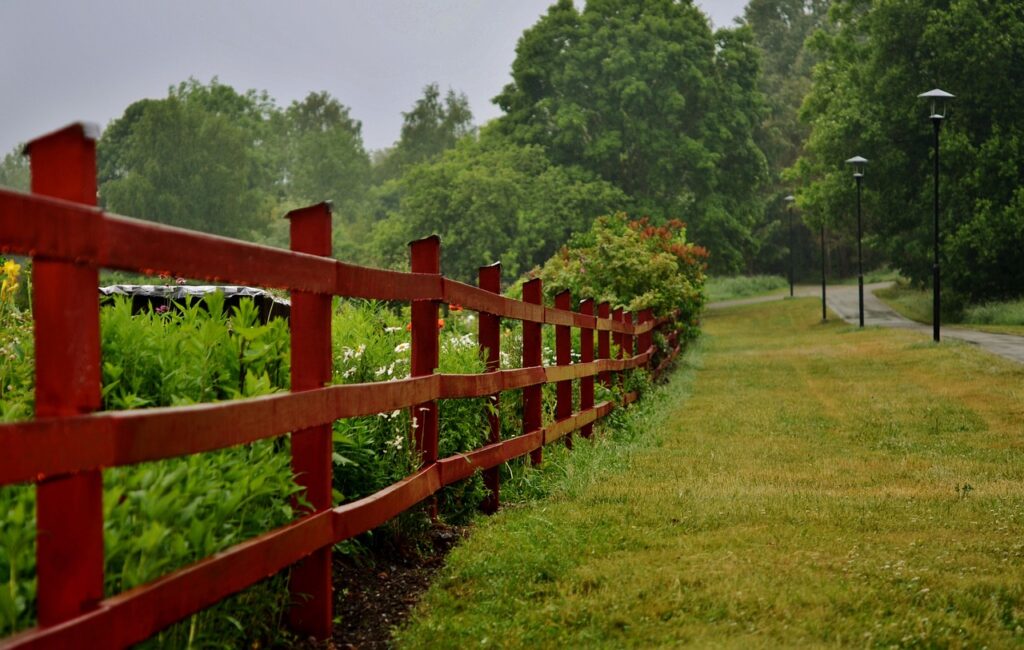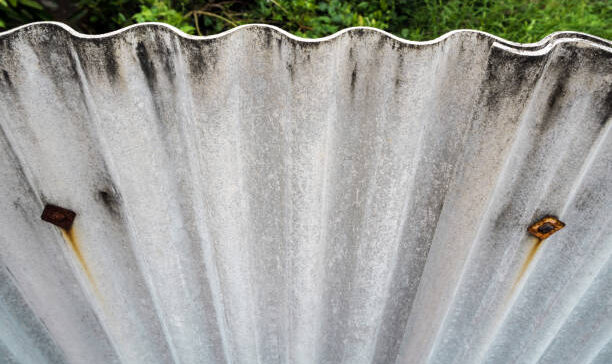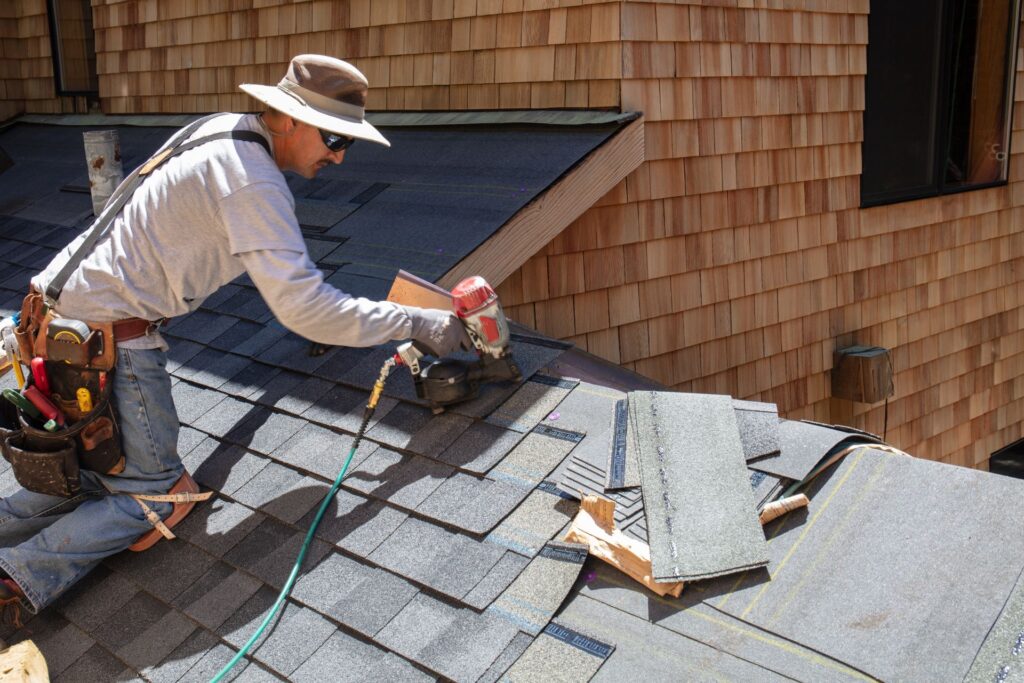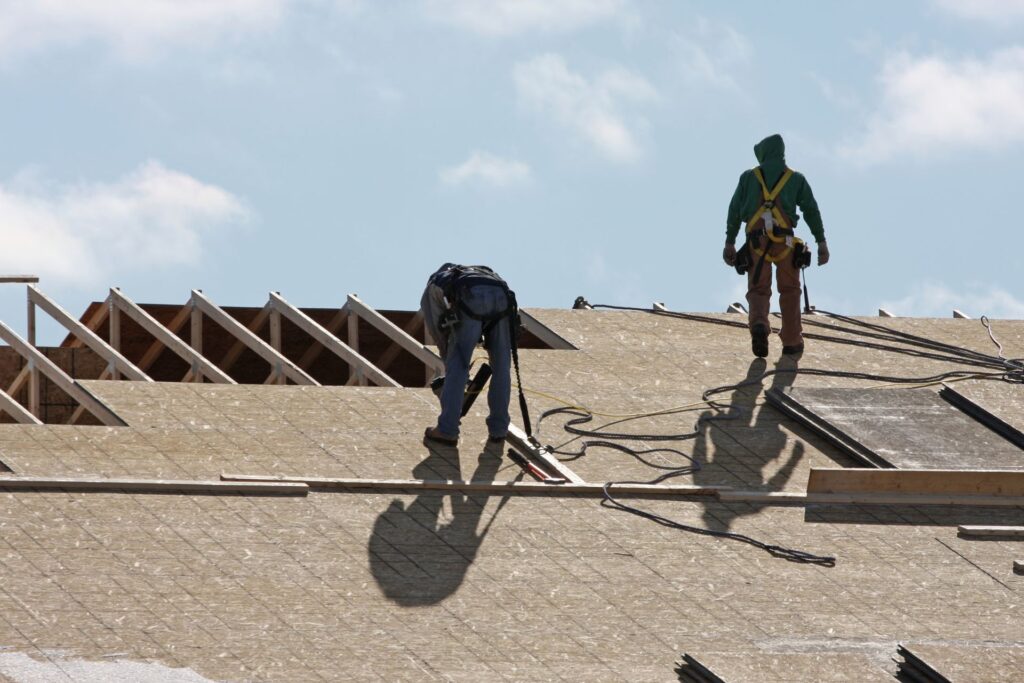Welcome to our comprehensive guide on navigating the costs associated with building a retaining wall in New Zealand. Whether you’re a homeowner looking to enhance your property’s landscape or a property developer keen on maximizing land use, understanding the financial outlay required for such a project is crucial. Retaining walls not only play a vital role in preventing soil erosion and managing water runoff but also add aesthetic value and functionality to your outdoor space. With the varied terrain and unique environmental conditions in New Zealand, it’s important to budget accurately and make informed decisions when planning your retaining wall project. In this guide, we’ll delve into the various factors that influence the cost of building a retaining wall, from material choices and design complexity to labor costs and legal considerations. Our goal is to arm you with the knowledge you need to plan effectively, choose the right materials and professionals, and ultimately ensure your project is both beautiful and cost-effective. Let’s embark on this journey together to build not just a wall, but a lasting addition to your landscape that you’ll enjoy for years to come.
On average, the cost of building a retaining wall in New Zealand starts from NZ$250 per square meter, varying significantly based on materials, design complexity, labor, and site conditions. Options like timber, concrete, and stone each have different price points and suitability for various landscapes. The overall dimensions and the intricacy of the wall’s design can influence both material and labor costs. Site accessibility and preparation requirements, such as land clearing and grading, also impact the total expense. Additional costs may include permits and engineering reports. Accurate budgeting requires consulting with professionals to account for all variables specific to your project.
- Why Build A Retaining Wall?
- Factors Influencing The Cost Of Building A Retaining Wall In NZ
- Average Costs And Budgeting
- Planning And Permissions
- Choosing The Right Contractor
- DIY VS. Professional Installation
- Maintenance And Longevity
- FAQs: About Cost Of Building Retaining Walls NZ
- Conclusion
- Find A Professional Retaining Wall Builder Near You!
Why Build A Retaining Wall?
Creating a retaining wall isn’t just about putting up a barrier; it’s a strategic decision that can significantly impact both the functionality and aesthetics of your outdoor space. In this guide, we’ll delve into the reasons why building a retaining wall might just be the game-changer your property needs, focusing on its functional benefits and aesthetic advantages.
Functional Benefits of Retaining Walls
Preventing Soil Erosion
One of the primary reasons to consider a retaining wall is its ability to combat soil erosion. In areas prone to heavy rains or where the landscape naturally slopes, soil can easily be washed away, leading to a loss of valuable topsoil and potential damage to your property. A retaining wall provides a solid barrier that holds back soil, ensuring that your land remains intact and healthy.
Managing Water Runoff
Alongside preventing soil erosion, retaining walls play a crucial role in managing water runoff. Without proper management, runoff can pool in undesired areas, potentially flooding your property or garden. By incorporating drainage solutions within the wall’s design, you can direct water away from sensitive areas, safeguarding your property against water damage and reducing the risk of flooding.
Maximizing Usable Land Space
Sloped properties often struggle with unusable outdoor space. Retaining walls can transform these inclines into terraced levels, opening up new possibilities for gardening, outdoor living spaces, or even additional parking. This not only enhances your property’s functionality but can also increase its value by adding usable square footage.
Aesthetic Advantages of Retaining Walls
Enhancing Landscape Design
Beyond their practical purposes, retaining walls offer significant aesthetic benefits. They can serve as a focal point in your garden or blend seamlessly into the landscape, depending on the materials and design chosen. Whether you opt for natural stone, concrete blocks, or wood, retaining walls can complement your outdoor space’s existing aesthetic or inspire a new design direction.
Retaining walls can also be designed with features such as built-in seating or garden beds, further enhancing the beauty and utility of your outdoor area. By choosing materials and designs that align with your landscape’s style, you can create a cohesive and attractive outdoor space.
In conclusion, building a retaining wall is more than just an aesthetic choice—it’s a practical solution to several landscaping challenges. From preventing soil erosion and managing water runoff to maximizing usable land space, the benefits are clear. Moreover, the potential to enhance your property’s visual appeal should not be underestimated. Whether you’re looking to solve a specific issue or simply want to elevate your outdoor space, a retaining wall might be the perfect addition to your landscape.
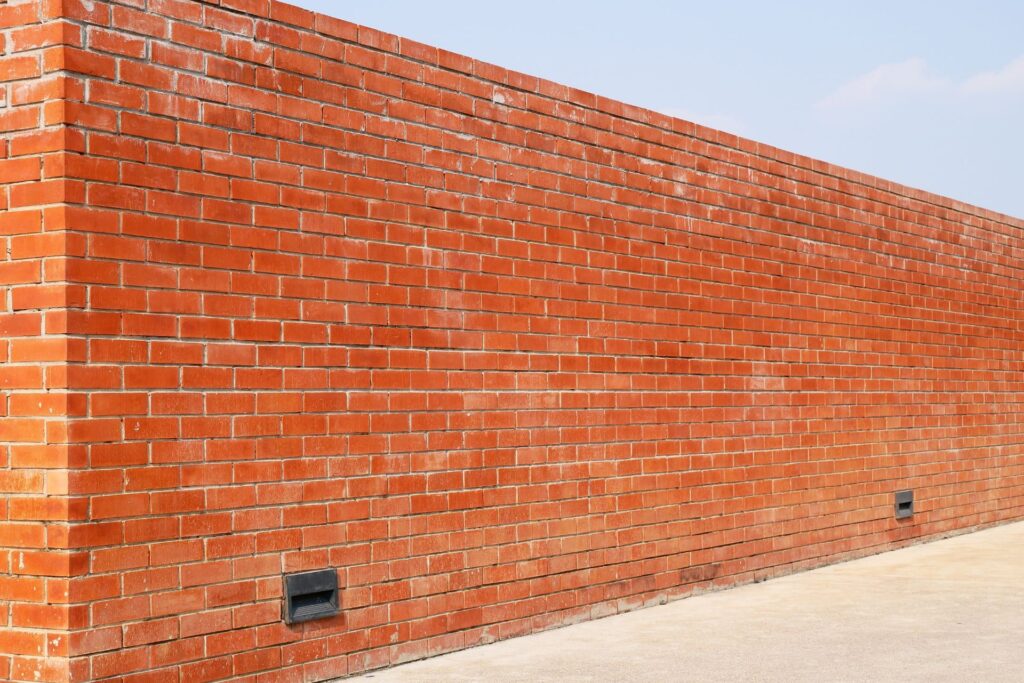
Factors Influencing The Cost Of Building A Retaining Wall In NZ
When planning to build a retaining wall in New Zealand (NZ), understanding the factors influencing its cost is crucial for effective budgeting and decision-making. The cost of constructing a retaining wall in NZ can vary widely, and this variation is primarily due to the following factors: material choices, size and scale of the project, design complexity, site accessibility and preparation, and labor costs. By delving into each of these aspects, homeowners and contractors alike can make informed decisions to ensure the retaining wall not only meets their functional and aesthetic needs but also aligns with their budget.
Material Choices
The choice of material is one of the most significant factors affecting the cost of a retaining wall. In NZ, common materials include timber, concrete, stone, and gabion, each with its price range and suitability for different landscapes.
Timber: Often chosen for its natural appearance and cost-effectiveness, timber is suitable for walls up to a certain height. Prices vary based on the type of wood, with treated pine being a more affordable option compared to premium hardwoods. Timber is best suited for residential landscapes where the aesthetic value is prioritized.
Concrete: Concrete retaining walls, including poured concrete and concrete blocks, are known for their strength and durability. While concrete may be at the higher end of the price spectrum, its longevity and low maintenance make it a cost-effective solution for larger projects.
Stone: Stone retaining walls offer a timeless, natural look that blends well with any landscape. The cost can be high, depending on the type of stone and the complexity of the construction, but the aesthetic appeal and durability often justify the investment.
Gabion: Gabion walls, made from wire baskets filled with rock or rubble, are an economical and environmentally friendly choice. They are particularly suited for large-scale, commercial landscapes or areas requiring significant erosion control.
Size and Scale
The overall size of the retaining wall, including its length, height, and thickness, directly impacts the cost. Larger walls require more materials and labor, increasing the budget. Additionally, the scale of the project may necessitate special equipment or more complex construction techniques, further influencing the price.
Design Complexity
Custom designs, such as curves, stairs, or terracing, add complexity to the construction process, requiring more time, materials, and skilled labor, all of which contribute to higher costs. The more intricate the design, the more significant the impact on the final price.
Site Accessibility and Preparation
The ease of access to the construction site and the need for land clearing, grading, or other preparatory work can significantly affect the cost. Difficult access may require special equipment or additional labor, while extensive site preparation can add unforeseen expenses to the project.
Labor Costs
The cost of labor is another crucial factor. Professional installation ensures the retaining wall is structurally sound and compliant with local building codes, but it comes at a price. In NZ, labor costs can vary widely based on the complexity of the project and the expertise required. For those considering a DIY approach to save on costs, it’s essential to weigh the potential savings against the risks of improper installation, which can lead to future structural issues.
In conclusion, understanding the factors influencing the cost of building a retaining wall in NZ allows for better planning and execution of the project. By considering material choices, the size and scale of the wall, design complexity, site accessibility and preparation, and labor costs, homeowners and contractors can create a retaining wall that meets their needs while staying within budget.
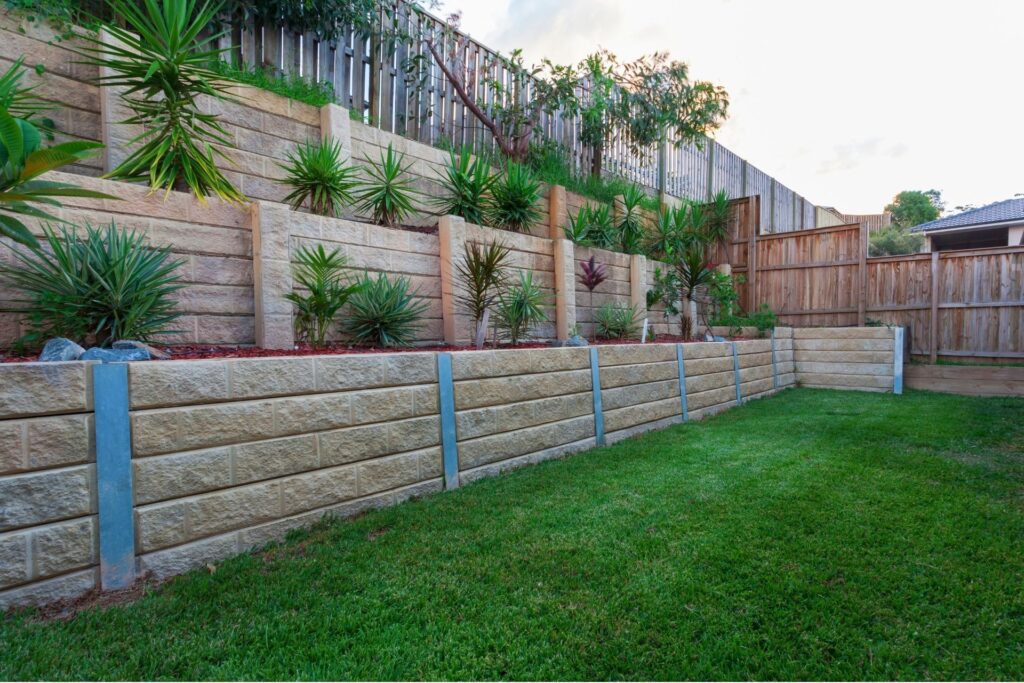
Average Costs And Budgeting
Creating an engaging and informative guide to understanding average costs and budgeting for your project can seem daunting at first. However, with a detailed breakdown and insights into the hidden expenses that often go unnoticed, you can navigate this critical aspect of planning with confidence. Our goal is to offer a clear, comprehensive overview that not only serves as a reliable reference for budgeting but also provides valuable tips to avoid common pitfalls.
Understanding Average Costs: A Starter Guide
When embarking on a new project, whether it’s construction, renovation, or any endeavor requiring significant investment, the first question that often arises is, “How much is this going to cost?” The answer, though variable, can be approached by examining recent data on average costs. These figures, usually presented per meter or square meter, offer a solid foundation for initial budgeting. For instance, if you’re looking at constructing a new building, knowing the average cost per square meter for similar projects in your region can give you a ballpark figure to start with.
It’s important to remember that these averages are just starting points. Prices can fluctuate based on a myriad of factors including materials, labor costs, location, and the current economic climate. To get the most accurate estimate, it’s recommended to consult with professionals who can provide quotes based on the specifics of your project.
Navigating Additional Costs
While average costs provide a baseline, there are often additional expenses that can sneak up on you if not accounted for from the beginning. These can significantly impact your budget and project timeline if overlooked. Here are a few potential additional costs to keep in mind:
Permits and Fees: Almost every project will require some form of permit or fees paid to local authorities. These can vary widely depending on the type and scope of your project, as well as local regulations.
Engineering Reports: For construction projects, especially, you may need detailed engineering reports. These assess the feasibility of your project and ensure that it meets all safety standards and regulations.
Unexpected Delays: Weather, supply chain issues, or unforeseen complications can lead to delays. Having a contingency budget for these unexpected costs can help keep your project on track.
Design Changes: It’s not uncommon for projects to evolve during the planning or construction phase. Changes to the original plan can lead to additional costs, so it’s wise to allocate a portion of your budget for this possibility.
Budgeting Best Practices
Effective budgeting goes beyond just tallying up costs. It involves strategic planning, ongoing monitoring, and flexibility. Here are some tips to help you manage your project’s finances effectively:
Get Multiple Quotes: Always get multiple quotes for any work or materials. This not only ensures you get the best price but also gives you a more comprehensive view of the potential cost range.
Include a Contingency Fund: Experts recommend setting aside 10-20% of your total budget to cover unexpected expenses. This can be a lifesaver when dealing with unforeseen challenges.
Regularly Review Your Budget: Your budget should be a living document that you review and adjust as needed. This helps you stay on top of expenses and make informed decisions throughout the project.
By understanding the average costs and potential additional expenses involved in your project, you can create a more accurate and effective budget. Remember, the key to successful budgeting is preparation, flexibility, and informed decision-making. With these insights and strategies, you’re well-equipped to tackle your project with confidence, ensuring that financial surprises are kept to a minimum.
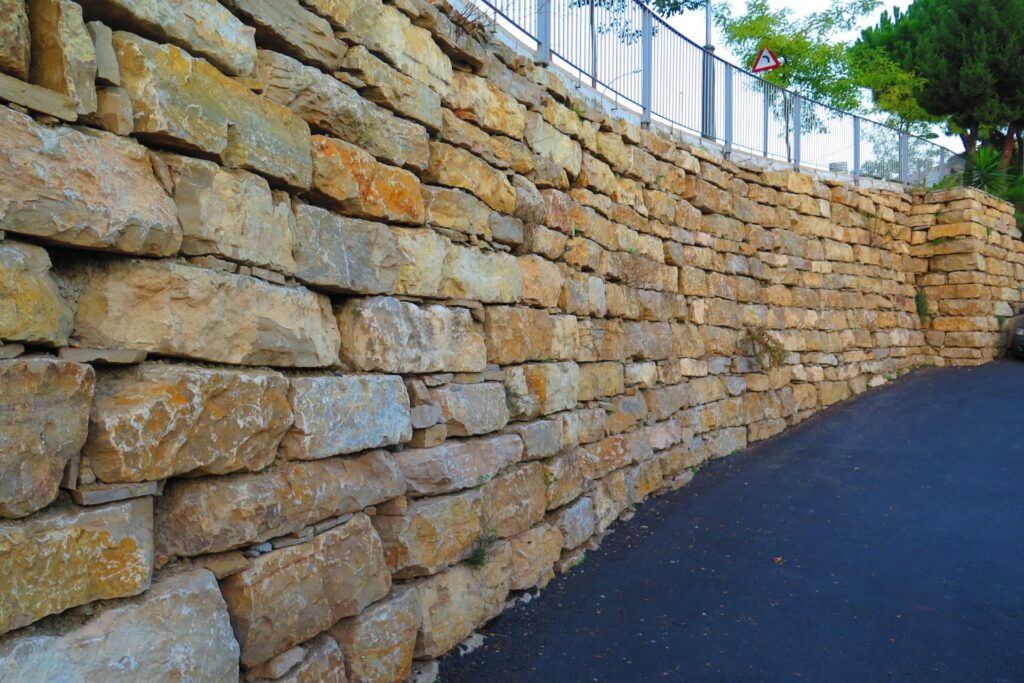
Planning And Permissions
When considering the construction of a retaining wall in New Zealand, it’s essential to navigate through a series of legal and planning considerations to ensure the project proceeds smoothly and in compliance with local regulations. This guide aims to shed light on the vital steps of planning and obtaining the necessary permissions, emphasizing the importance of consulting with local councils or construction experts. By adhering to these guidelines, homeowners and contractors can ensure their retaining wall project not only stands the test of time but also aligns perfectly with legal standards, avoiding any potential legal complications.
Understanding Building Codes and Consents
In New Zealand, the construction of a retaining wall is subject to specific building codes and regulations that are in place to ensure safety and environmental integrity. The Building Act 2004 and the Building Code are the primary legislative documents governing such constructions. Depending on the height, location, and purpose of the retaining wall, different rules may apply, making it crucial to understand these regulations thoroughly.
Height and Location: Typically, a retaining wall exceeding a certain height (often around 1.5 meters) requires building consent from the local council. However, this can vary based on the wall’s proximity to boundaries, public spaces, and its potential impact on the environment.
Material and Design Considerations: The choice of materials and the design of the retaining wall must comply with the durability and stability standards set forth in the Building Code. This includes considerations for drainage and the wall’s ability to withstand the specific soil and environmental conditions of the site.
The Importance of Consulting with Local Councils
Before embarking on the construction of a retaining wall, it’s imperative to consult with the local council. This step is not just a legal formality but a crucial phase in the planning process that can provide valuable insights and guidance. The local council can offer detailed information on:
- The necessity of building consent for your specific project
- Any additional permits required, especially if the wall affects public land or utilities
- Guidelines on the materials and construction methods to ensure compliance with local standards
Consulting with a construction expert or an engineer specializing in retaining walls can also provide a wealth of information on the best practices for design and construction, tailored to the unique challenges of your project.
Why This Matters
Adhering to the planning and permission process not only ensures the legal compliance of your retaining wall project but also contributes to the safety and stability of the construction. An expertly planned and constructed retaining wall can prevent soil erosion, protect structures, and enhance the aesthetic appeal of your property. By taking the time to thoroughly understand and comply with local regulations and by seeking professional advice, you can ensure that your retaining wall serves its intended purpose effectively and for many years to come.
In conclusion, the construction of a retaining wall in New Zealand is a process that demands careful consideration of legal and planning aspects. By familiarizing yourself with the building codes, obtaining the necessary consents, and consulting with local councils and construction experts, you can navigate these requirements smoothly. This approach not only safeguards your investment but also ensures that your retaining wall enhances your property’s value and safety.

Choosing The Right Contractor
When embarking on a construction or home renovation project, selecting the right contractor is paramount to ensuring the work is done well, on time, and within budget. Making an informed decision requires a bit of research, savvy questioning, and an understanding of what to look for. In this guide, we’ll cover essential tips on finding and selecting a reliable contractor, including the critical steps of verifying qualifications and references, and why getting multiple quotes is crucial for competitive pricing.
Finding a Reliable Contractor
Start with Research: Begin by searching for contractors with strong reputations in your area. Utilize online resources, such as review sites and social media platforms, to gauge past customer experiences. Don’t forget the power of word-of-mouth; ask friends, family, and colleagues for recommendations based on their personal experiences.
Check Qualifications and Licenses: Once you have a list of potential contractors, it’s essential to verify their qualifications. Check that they are licensed to work in your area and look into any certifications that may be relevant to your project. A qualified contractor should have no issue providing this information.
Review Their Portfolio: Ask for a portfolio of past projects. This will give you an insight into the quality of their work and whether they have experience in projects similar to yours. Photos, testimonials, and case studies can all offer a comprehensive look at their capabilities and craftsmanship.
Selecting the Right Contractor
Conduct Interviews: Meeting potential contractors face-to-face or via virtual meetings can give you a lot of insight into how they operate. Prepare a list of questions to ask, such as:
- How many projects like mine have you completed in the past year?
- Can you provide a detailed timeline of the project?
- How do you handle changes or challenges during the project?
- Can you provide references from previous projects?
Verify References: Speaking to past clients can provide invaluable insights into how the contractor manages projects, their reliability, communication skills, and ability to stay within budget and on schedule. Don’t hesitate to ask for at least three references.
Understand the Bid: When you request a quote, ask for a detailed bid that includes the cost of materials, labor, and any other expenses that may arise. This detailed proposal will help you understand exactly what you are paying for and prevent unexpected costs.
The Importance of Getting Multiple Quotes
Ensure Competitive Pricing: Obtaining quotes from several contractors is critical for ensuring you receive competitive pricing. It allows you to compare cost, timelines, and the scope of work across different providers, ensuring you get the best value for your money.
Quality vs. Cost: While it might be tempting to go with the lowest bid, it’s essential to balance cost with quality. A significantly lower quote might mean the contractor is cutting corners or using inferior materials. Ensure you understand what each quote includes and make your decision based on a combination of price, quality of work, and the contractor’s reliability.
In conclusion, choosing the right contractor for your project involves thorough research, asking the right questions, verifying qualifications and references, and comparing multiple quotes. By taking these steps, you can find a reliable contractor who will complete your project to a high standard, on time, and within budget. Remember, a successful project is a result of a good partnership between you and your contractor, so choose wisely.

DIY VS. Professional Installation
When it comes to home improvement, one of the key decisions homeowners face is whether to embark on a DIY journey or to call in the professionals. This choice can significantly impact not only the cost and time involved but also the overall success and satisfaction with the project. Let’s dive into the nuances of DIY vs. professional installation, highlighting the pros and cons of each approach and offering guidance on how to make the best decision based on the project at hand.
The Allure of DIY: Pros and Cons
Pros:
Cost Savings: Perhaps the most enticing aspect of DIY is the potential for cost savings. By eliminating labor expenses, you can significantly reduce the overall cost of your project, making your budget stretch further.
Personal Satisfaction: Completing a project with your own hands can provide a sense of achievement and personal satisfaction that is hard to match. It’s an opportunity to learn new skills and gain confidence in your abilities.
Flexibility: DIY projects offer the flexibility to work at your own pace and on your own schedule. This can be particularly appealing for those with busy lifestyles or specific time constraints.
Cons:
Risk of Mistakes: Without professional expertise, the risk of mistakes increases, which can lead to costly repairs or adjustments down the line. The learning curve for new skills can be steep and frustrating.
Time Investment: DIY projects often take longer than anticipated, especially for those learning as they go. This time investment can be a significant drawback for those with limited free time.
Limited Resources: Professionals have access to tools, materials, and resources that may not be readily available to the average DIY enthusiast. This can affect the quality and feasibility of a project.
When to Call in the Professionals
Recognizing when to hire a professional is crucial to ensure the success of your home improvement project. Here are some scenarios where seeking professional help is advisable:
Complexity and Scale: For large-scale projects or those that involve complex systems (electrical, plumbing, structural changes), hiring professionals can save you time and prevent potential disasters. Their expertise ensures the project meets local building codes and standards.
Safety Concerns: Projects that pose significant safety risks, such as roof repairs or electrical work, should be left to the professionals. They have the training and equipment to handle these tasks safely.
Quality and Warranty: For projects where quality and longevity are paramount, professional installation can provide peace of mind through skilled workmanship and warranties on labor and materials.
Making the Right Choice
Deciding between DIY and professional installation ultimately depends on your skills, budget, and the project’s complexity. Here are some tips to help you make an informed decision:
Assess Your Skills: Be honest about your capabilities and the time you’re willing to invest in learning new skills. Some projects may require expertise that goes beyond basic home improvement knowledge.
Consider the Financial Implications: While DIY can save money upfront, mistakes or lower-quality work could end up costing more in the long run. Get quotes from professionals to accurately compare costs.
Evaluate the Project’s Impact: Consider how the project will affect your daily life. For essential services or areas of the home, minimizing downtime by hiring professionals could be worth the extra cost.
Choosing between DIY and professional installation is a significant decision that can influence the outcome of your home improvement project. By weighing the pros and cons of each option and considering the project’s requirements and your own capabilities, you can make a choice that ensures satisfaction, safety, and value for your home. Whether you decide to take on the challenge yourself or leave it to the experts, the key is to approach your project with careful planning and informed decision-making.
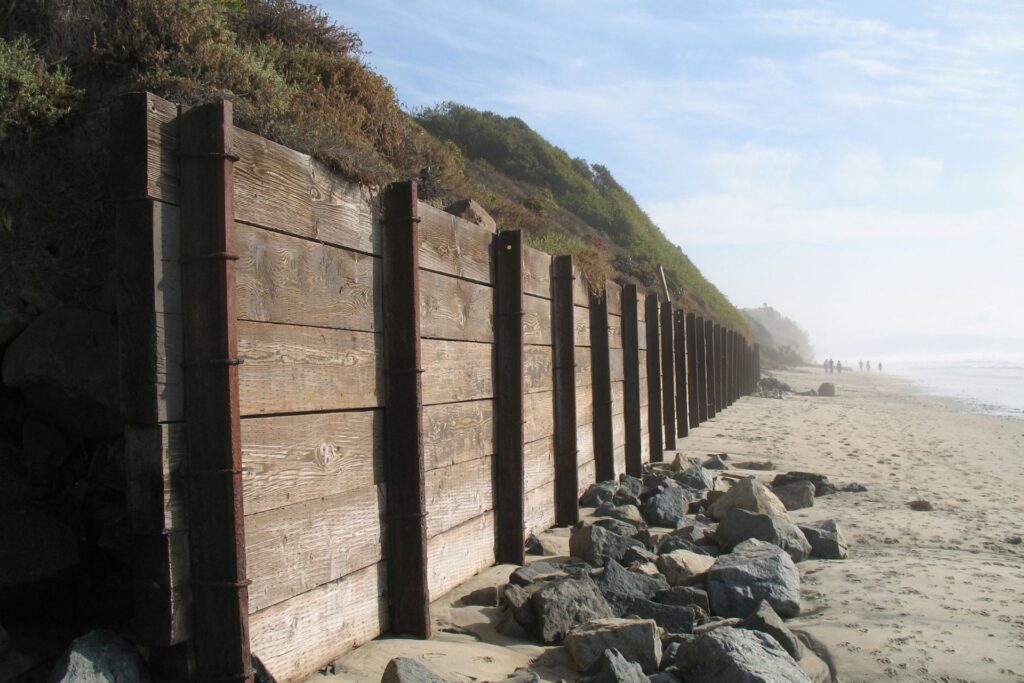
Maintenance And Longevity
Creating a robust and visually appealing retaining wall is an investment in your property’s aesthetics and structural integrity. To ensure that this investment stands the test of time, proper maintenance and care are indispensable. In this comprehensive guide, we’ll delve into essential maintenance tips for different types of retaining walls, highlight the importance of regular inspections, and advise on when it’s time to call in the professionals. Our goal is to empower you with knowledge to maximize the lifespan of your retaining wall, safeguarding your investment and preventing future costs.
Understanding the Importance of Retaining Wall Maintenance
Retaining walls, irrespective of their type—be it concrete, stone, timber, or gabion—play a crucial role in holding back soil, preventing erosion, and managing water flow in landscapes. However, just like any other outdoor structure, they are subjected to the elements and natural wear and tear over time. Regular maintenance not only prolongs their lifespan but also ensures they continue to perform their intended function efficiently.
Tailoring Maintenance to Wall Type
Concrete and Masonry Walls: For concrete and masonry retaining walls, checking for cracks and separations in the blocks or stones is key. Small cracks can be filled with masonry crack filler, but larger issues require professional assessment. Ensure proper drainage behind the wall to prevent water pressure build-up, which can cause structural damage.
Timber Walls: Timber retaining walls should be inspected for signs of rot or insect damage. Applying a wood preservative can extend their life, but damaged sections may need to be replaced. Ensure that the timber used is suitable for ground contact and treated for outdoor use.
Gabion Walls: Gabion walls, made from wire cages filled with rocks, require minimal maintenance. However, it’s important to check the integrity of the wire cages for any signs of rust or damage. In case of rust, applying a rust-inhibitor or replacing the affected sections is necessary.
Emphasizing Regular Inspections
Regular inspections are the first line of defense in retaining wall maintenance. Seasonal checks, especially after heavy rains or freeze-thaw cycles, can help identify potential issues early on. Look for any visible changes in the wall’s alignment, bulging sections, or water pooling at its base. Early detection of these signs can prevent more significant and costly repairs down the line.
Knowing When to Seek Professional Help
While DIY maintenance can address minor issues, certain scenarios require the expertise of a professional. If you notice significant shifting, large cracks, or if the wall is leaning, it’s time to call in the experts. Professional engineers or landscape contractors can assess the underlying issues and recommend the best course of action to ensure the safety and integrity of the wall.
Maintaining your retaining wall is not just about preserving its appearance; it’s about ensuring its structural integrity and functionality for years to come. By understanding the specific needs of your wall type, conducting regular inspections, and knowing when to seek professional advice, you can prevent future costs and enjoy the benefits of your retaining wall without worry. Remember, a little maintenance goes a long way in protecting your investment and keeping your landscape safe and beautiful.

FAQs: About Cost Of Building Retaining Walls NZ
Conclusion
In wrapping up our guide on constructing retaining walls in New Zealand, it’s crucial to underscore the essence of meticulous planning and precise budgeting, alongside considering both the functional and aesthetic dimensions of your project. The journey toward erecting a structurally sound and visually appealing retaining wall hinges on thorough preparation, an understanding of your landscape’s demands, and a realistic financial outline to navigate costs effectively. Emphasizing the quality of materials and professional craftsmanship can avert future expenditures, while the choice of design plays a pivotal role in enhancing your property’s value and charm.
This endeavor not only aims to prevent soil erosion and manage water runoff but also to augment the beauty of your outdoor space. A well-constructed retaining wall, thoughtfully integrated into your property’s architecture and natural surroundings, stands as a testament to the harmonious balance between utility and aesthetics. We trust this guide empowers you with the insight and confidence needed for a successful retaining wall project, encouraging a well-rounded approach that marries the practical with the pleasing, for a lasting and impactful addition to your landscape.
Find A Professional Retaining Wall Builder Near You!
- Retaining Wall Builders Hastings
- Retaining Wall Builders Hawkes Bay
- Retaining Wall Builders Kapiti
- Retaining Wall Builders Levin
- Retaining Wall Builders Lower Hutt
- Retaining Wall Builders Napier
- Retaining Wall Builders Palmerston North
- Retaining Wall Builders Porirua
- Retaining Wall Builders Upper Hutt
- Retaining Wall Builders Wellington
- Retaining Wall Installation Manawatu
- Retaining Walls Nelson
- Retaining Walls Tauranga
- Retaining Wall Builders Auckland
- Retaining Wall Builders Hamilton
- Retaining Wall Builders Tauranga
- Retaining Walls Christchurch
- Retaining Walls Rotorua
About the Author:
Mike Veail is a recognized digital marketing expert with over 6 years of experience in helping tradespeople and small businesses thrive online. A former quantity surveyor, Mike combines deep industry knowledge with hands-on expertise in SEO and Google Ads. His marketing strategies are tailored to the specific needs of the trades sector, helping businesses increase visibility and generate more leads through proven, ethical methods.
Mike has successfully partnered with numerous companies, establishing a track record of delivering measurable results. His work has been featured across various platforms that showcase his expertise in lead generation and online marketing for the trades sector.
Learn more about Mike's experience and services at https://theleadguy.online or follow him on social media:

